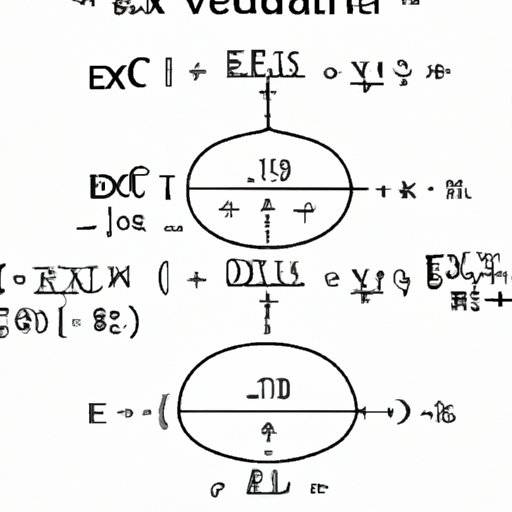
I. Introduction
Radical equations involve radicals (square roots, cube roots, etc.) and variables. They can appear in various forms and have different degrees, making them seem daunting to solve. However, mastering radical equations is essential in various fields, such as science, engineering, and mathematics. In this comprehensive guide, we’ll walk you through the process of solving radical equations, common mistakes to avoid, real-life applications, and graphical representations.
II. Step-by-Step Guide
To solve radical equations, the first step is to isolate the variable by moving all radicals to one side and all other terms to the other side. Then, we use the inverse operation to eliminate the radicals. This could involve squaring or raising both sides to the same power. Let’s take a look at some examples:
Example 1: Solve for x: √(x+1) = 3
Step 1: Square both sides to eliminate the radical. (x+1) = 9
Step 2: Solve for x. x = 8
Example 2: Solve for x: ∛(2x-1) + 1= 0
Step 1: Isolate the radical term. ∛(2x-1) = -1
Step 2: Cube both sides to eliminate the radical. 2x-1 = -1
Step 3: Solve for x. x = 0
Now it’s time for you to try some on your own. Solve the following:
Practice Problem 1: ∛(x+2) = 2
Practice Problem 2: √(2x+1) + 3 = 5
III. Common Mistakes to Avoid
When solving radical equations, avoiding common mistakes is crucial. Some mistakes include forgetting to square both sides to eliminate the radical, squaring only one side of the equation, or not checking for extraneous solutions. These mistakes can lead to wrong answers or no answers at all.
To avoid these mistakes, remember to always square both sides of the equation, or raise both sides to the same power when eliminating radicals. Also, check for extraneous solutions by plugging the found solution back into the original equation. If the solution creates an undefined expression or a false statement, it’s extraneous.
IV. Real-World Applications
Radical equations are used in various fields, such as science and engineering, to solve real-life problems. For example, in physics, radical equations are used to find displacement and velocity of a moving object. In electronic engineering, radical equations are used to find the frequency of an electrical signal. In finance, radical equations are used to calculate mortgage rates and loan payments.
Here are some real-world examples for you to solve:
Real-World Problem 1: A car accelerates uniformly from rest to 20 m/s in 10 seconds. How far did it travel during this time?
Real-World Problem 2: A radio wave has a frequency of 500kHz. What is the wavelength of the wave?
V. Graphical Representations
Another way to solve radical equations is graphically. We can graph the equation and find the intersection points between the graph and the x-axis, which represent the solutions to the equation.
For example, consider the quadratic equation y = x² – 4x – 5. To graph it, we can find the x and y intercepts by solving for y when x=0 and solving for x when y=0. The x-intercepts represent the solutions to the equation.
Now it’s time for you to practice solving quadratic equations graphically:
Practice Problem 1: Solve the quadratic equation y = x² – 6x + 8.
Practice Problem 2: Solve the quadratic equation y = 3x² + 6x – 15.
VI. Challenge Questions
Are you ready for a challenge? Try these problems:
Challenge Problem 1: √(3x+5) = ∛(x+1)
Challenge Problem 2: 2√(x+1) – 3 = x
Challenge Problem 3: Solve the quadratic equation y = x² – 7x + 12.
Challenge Problem 4: An object is thrown upward with a velocity of 30 m/s. How long does it take the object to reach its maximum height?
Challenge Problem 5: A geometric sequence has a common ratio of 2. If the fifth term is 32, what is the first term?
Challenge Problem 6: A brewery produces 4000 bottles of beer in 10 hours. How long will it take to produce 7000 bottles?
VII. Conclusion
By now, you should have a good understanding of how to solve radical equations. Remember to avoid common mistakes, practice, and apply what you’ve learned in real-life scenarios. The more you practice, the better you’ll become at solving radical equations.





